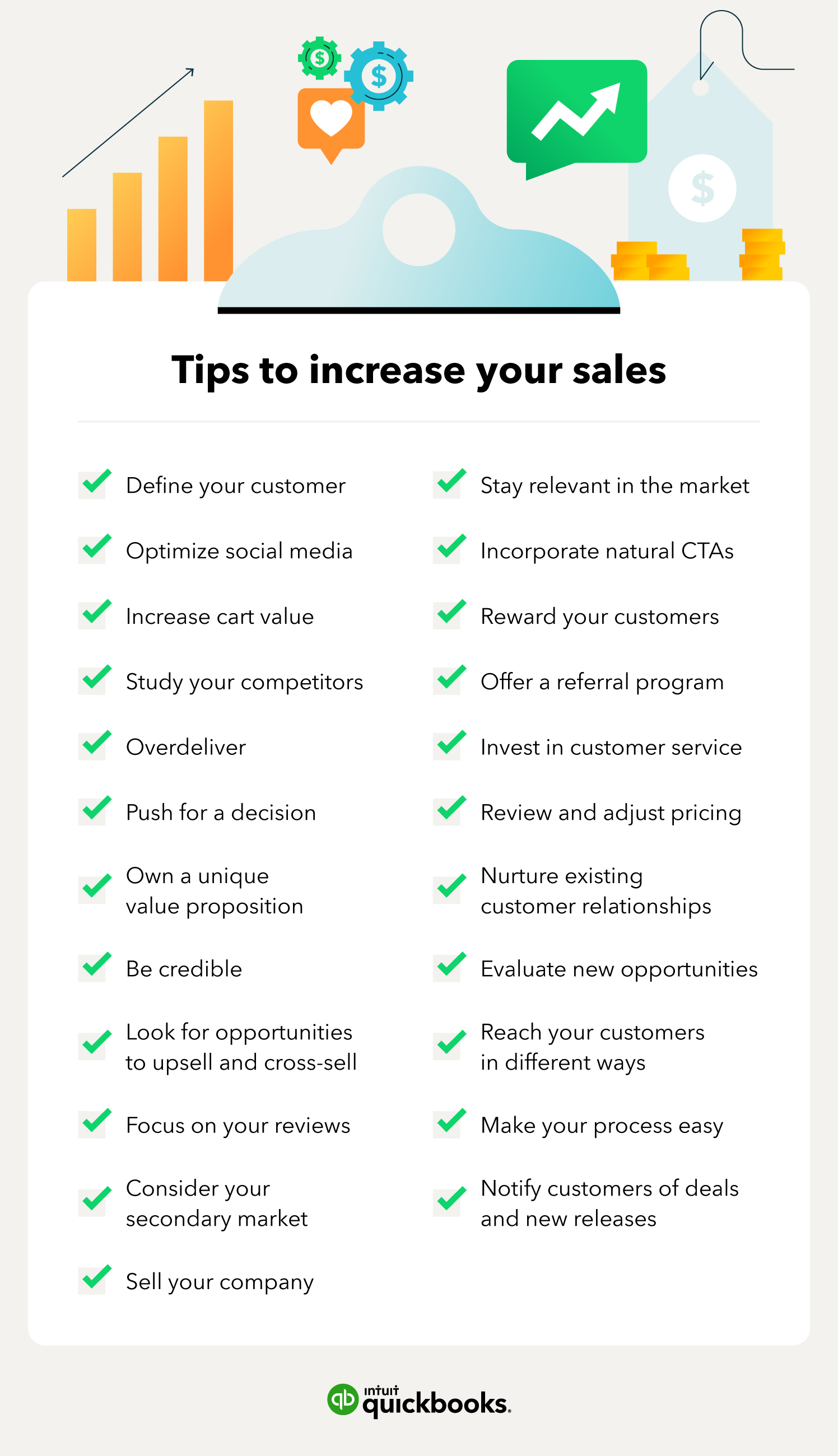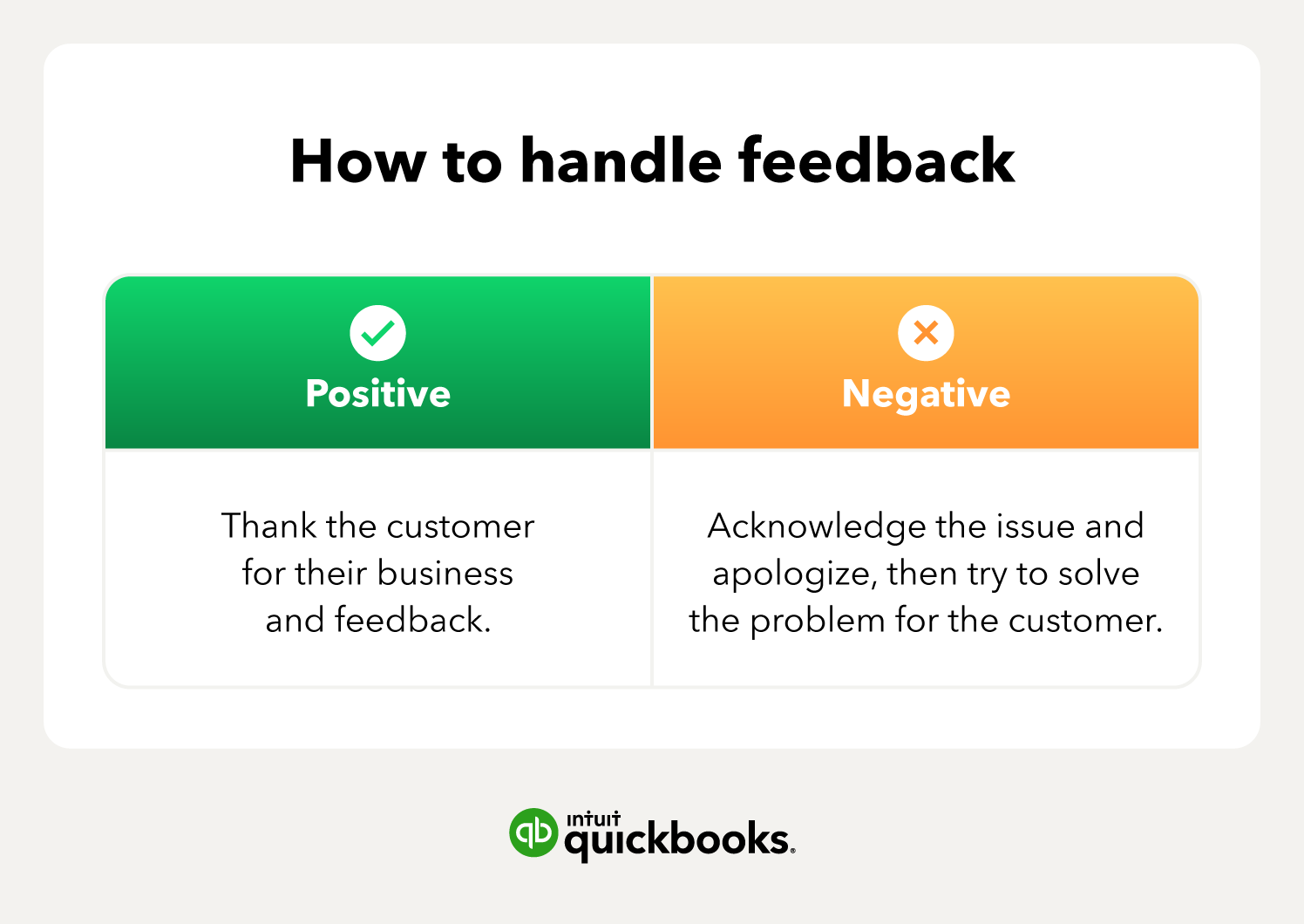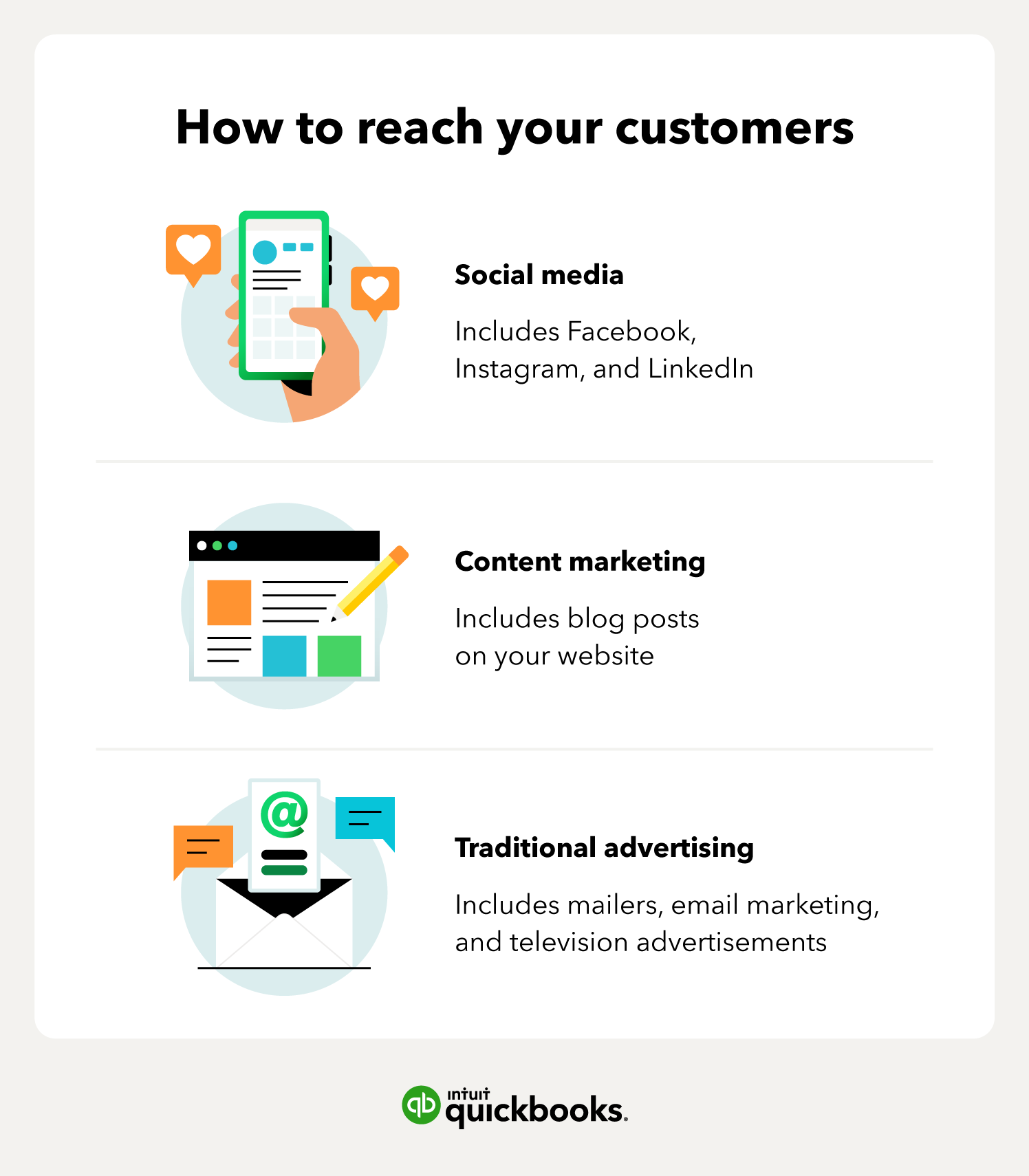As a small business owner, you’ve done the work to create a clear vision for your business, figured out how to run your business effectively, and have built a loyal clientele. Once you’ve been in business for a while, you might feel that you’ve hit a sales wall, where you’re not seeing an increase in sales volume. Don't panic though, as this is a rather common occurrence for small businesses owners. Below, we've compiled a list of 23 different tactics to increase sales, build your customer base, and create longevity for years to come.

How to increase sales with 23 different tactics

1. Define your customer
When figuring out how to increase sales, it’s important to first define your customer. This is a more in-depth evaluation than your initial customer definition; while you might have already identified the ideal customer for the products or services that you sell, you will also want to determine:
- When your ideal customer buys your product or service
- Your customer's buying strategy
- The location of your customer
- Why your customer is buying the product or service
By digging a little deeper into your customer's habits, you can maximize your efforts when it comes to your selling strategy.
2. Optimize your social media
In 2022, it’s important for your business to be found on social media platforms—after all, that’s where your customer base likely spends much of their time. That’s why it’s important to not only have a social media presence across various platforms but to also invest in social media optimization.
To make sure your social media pages are optimized for success, make sure they contain your business’s:
- Name
- Address
- Phone number
- Operating hours
Your profile should also clearly state who you are, what you do, and who can benefit from your products or services.
Remember that because every platform is different, every profile should be different as well. For example, an Instagram profile would look vastly different from a LinkedIn profile, as the audiences are on these platforms for different reasons.
3. Increase cart value
If you have an online store, increasing cart value is one important aspect of increasing sales. Cart value, or average order value, is the result of your total sales revenue divided by the number of orders you’ve had. As a business owner, your goal is to sell products, and if you’re only selling one or two items at a time, you’re not capitalizing on each customer’s potential.
Instead, try some of these options to maximize your cart value:
- Create order minimums for free shipping
- Establish a flexible and easy return policy
- Provide bundle deals
4. Study your competitors
One of the most impactful ways to increase sales for your business is to study your competition. Take time to investigate their marketing strategies, customer base, and even reviews. Consider using a SWOT analysis to understand where their strengths, weaknesses, opportunities, and threats lie and compare them with your own to find the gaps where your business might thrive.
5. Own a unique value proposition
A value proposition is essentially a pitch to your customers of what you offer and how you're different. It’s a statement that communicates to your customers why you are the best choice. When determining your own perceived value proposition, consider the following factors:
- Who you’re looking to serve: Your ideal customer should know that you’re speaking directly to them.
- The pain points you’re solving: What problems do you solve that competitors don’t?
- The way you problem-solve: How do you solve the problem that your competitors can’t?
- Why it matters: In your value statement, you must express a clear benefit to your customers.
6. Evaluate new opportunities
If you’ve been in business for a while, you might experience a plateau in sales at some point. To reinvigorate your business and sales strategy, try evaluating new opportunities. Depending on your business, these new opportunities could include:
- App creation: Depending on your niche, developing an app to help streamline the way your customers interact with you could help make the lives of your customers easier, therefore potentially increasing your sales.
- Pop-up shops: What better way to break out in a new location than with a pop-up shop? These mobile solutions can easily get your name out there in new markets, and you can smoothly track sales across different regions.
- Franchise: If you’re looking to go big, consider a franchise opportunity. A franchise will already have a solid business plan and process in place, making it that much easier for you to achieve your goals.
7. Overdeliver
There’s nothing worse for a customer than being sold on a good or service, only to be disappointed due to poor service or a lackluster product. There’s a saying in the business world by an unknown source: “Promise only what you can deliver, then deliver more than you promise.”
This doesn’t mean to shortchange your customers just to shock them by overdelivering. If you’ll be performing a service, quote a reasonable timeframe and try to overdeliver by finishing ahead of schedule without cutting corners. Or consider giving your customer more than what was promised. These small but meaningful gestures will show your customers that you go above and beyond for them.
8. Stay relevant in the market
In a fast-paced environment, it can be hard to keep up with the growing demands of businesses. You may be relevant now, but without proper upkeep, you risk being outperformed by the competition. To avoid becoming yesterday’s news, consider the following tips:
- Embrace innovation: Just as the times change, so should your business, when applicable.
- Collaboration: Investigate ways to integrate collaboration into your business, both within and outside of your industry.
- Trends: Knowing and anticipating industry trends is key for staying at the top of your industry.
9. Nurture existing customer relationships
While it can be exciting and important to attract new customers, it’s just as important, if not more important, to nurture your current customers. After all, there are several benefits to customer retention, including:
- The potential to save money, as returning customers are more likely to make a purchase.
- The potential to increase the rate of sales success, as the customer likely understands the quality of your brand and products and might buy from you again.
By taking actions like sending thank you notes (when applicable), giving them an opportunity to share feedback, and sending them useful information in the form of a newsletter, you’ll be sure to keep your customers coming back.
10. Be credible
No customer wants to be swindled or feel that they’re giving their money to an untrustworthy business, especially now in the age of scams. Building credibility within your business community can take work, but it’s worth it in the long run. Some ways to build your credibility with both existing and potential customers include:
- Creating a mission statement: Stand tall for the values that you believe in. Work toward self-improvement, and incorporate that into your core beliefs.
- Being honest: Honesty truly is the best policy. Be transparent with your customers, especially if you make a mistake, to gain and keep their trust.
- Remaining genuine: Even if you’re newer to the market, you want to be genuine to your customers. Establish your business on a solid foundation that provides lasting value and stability.
- Being competent: You should be an expert in your field. Be the one that customers can come to when they have questions.
11. Focus on your reviews

Before customers decide on where to purchase a service or product, it’s likely that they’ve done some sort of research on the company. If your potential customers go to a platform like Google or Facebook and notice that you have poor reviews, it's possible that they will shop elsewhere, meaning you’ve lost a potential sale and returning customer.
To try to increase the number of positive reviews you have and read your reviews often (say, weekly or monthly). Not only should you read what your customers are saying about you, but you should also:
- Respond to reviews
- For positive reviews: Thank the customer for their business and feedback.
- For negative reviews: Acknowledge the issue and apologize, and thank them for the honest feedback. Can you fix the issue at hand and turn the negative feedback into a positive for the customer?
- Strongly consider customer feedback and implement if feasible
- Read reviews of your competitors to see how favorably (or unfavorably) they are being viewed
12. Incorporate natural CTAs
A CTA, or call to action, is a vital way to grab your customer’s attention. It encourages them to do something on your site or social media, rather than just reading. It’s a great way to get your customers to engage with your brand, oftentimes giving them additional information in the process and moving them through the buyer funnel. Some examples of CTAs are:
- “View our portfolio”
- “Check out our work”
- “Log in with Facebook”
- “Log in with Google”
- “Sign up for our newsletter”
- “Download your free copy”
- “Subscribe here”
- “Start your free trial now”
To best utilize CTAs, you want to make sure they are relevant to your page and visitor. You can implement them by including pop-ups, sidebars, links, or buttons, but ensure that they do not become intrusive to the user’s experience.
13. Reward your customers
You’re a profitable business owner and have built a steady stream of customers. One way to keep your customers returning is to offer them some sort of rewards program. After all, everyone likes to feel appreciated, and there’s (almost) no better way to keep your customers happy than to give them a bonus.
There are many ways to implement a customer loyalty program, including:
- Future discounts based on the sale of a current purchase
- Spend $100 now, take 20% off of a future purchase
- Reward points
- Earn points for every $1 spent; redeem points for money off of future purchases
- Special access for existing customers
- Existing customers can have the first look at new products or services
14. Offer a referral program
Along with rewarding customers for purchases, why not reward them when they refer someone else to you? No matter your type of business, you could always use a referral for more customers, and your current customers will be sure to appreciate you for offering them a reward.
When implementing a referral community, be sure to make it attainable for your customers. Consider a reward such as dollars off or a percentage off their next purchase for each member referred. Word of mouth goes a long way, so you’ll want to make this a win-win for all.
15. Invest in your customer service
You could have the best products on the market listed at the best prices, but if your customer service is lacking, you might still be missing out on your piece of the market share. Lack of empathy, long wait times, and an inability to reach a company representative are just some of the factors that might turn off a potential customer from making a purchase with you. Some ways to solve this problem include:
- Training salespeople on soft skills, including empathy and conflict resolution
- Offering multiple channels for customer service
- Encouraging your sales team to get to know (and care about) your customers
16. Review and adjust your pricing
When thinking about how to increase sales, you might be wondering about the pricing of your products or services. Pricing obviously impacts your profitability, but it also impacts how you are perceived by potential customers. If your price points are too high, you can be seen as overpriced, while too low of a price point can make you seem cheap.
To make sure you have the right pricing strategy in place, you need to get an idea of what your ideal customer would be willing to pay for the product. For example:
- Higher-end boutiques usually draw in customers who are willing to pay a higher price for quality.
- Big-box retailers and discount stores typically have customers who are more cost-savvy.
17. Reach your customers in different ways

Whether you have a strictly online business, a brick-and-mortar store, or a combination of both, your sales are impacted by the reach of your customers. If your customers don’t know you are in business, how can they buy from you?
While cold calling might be a thing of the past, there are a few creative ways to reach your customers:
- Social media: This includes Facebook, Instagram, Snapchat, TikTok, and Twitter
- Post engaging content often; the more shares you get, the more views your content will garner.
- Content marketing: By maintaining an up-to-date blog, your potential customers have the chance to learn about you when reading up on a given topic.
- Traditional advertising: Especially if you are brand new to the area, traditional advertising will reach the local audience quickly. This can include email marketing, mailers, or television ads.
18. Look for opportunities to upsell and cross-sell
The art of upselling and cross-selling can be a tricky line to toe. If you push too hard to make a sale beyond what the customer initially wants, you might come off as pushy, desperate, or rude. The key is to look for the proper opportunities.
An example of when to upsell would be making product recommendations as the customer is making their purchase. Cross-selling includes suggesting complementary items to what they are purchasing, such as car speakers to go with the new TV they’re buying.
The key to this strategy is to not seem pushy or “trying to make a sale,” but rather to help the customer in ways that they might not have top of mind.
19. Push for a decision
It might sound counterintuitive, but sometimes pushing for a decision is a necessary task. There is an appropriate way to push for a decision in the buying process—you want to be somewhat firm and flexible at the same time.
For example, try asking something like, “What can I do to help you make a decision?” Or try talking about what they’ve already mentioned, such as, “I know you mentioned you were looking for X; let me tell you the benefits of it.” As an online example, sending an email reminder for an abandoned cart can also gently push your customer for a decision.
Oftentimes, the customer is either concerned with making the right decision for themselves, or truly just doesn’t know if they need a certain product. By offering them a little guidance, you’re more likely to close the deal without pushing boundaries and being overbearing.
20. Consider your secondary market
You’ve put a lot of effort into evaluating market size, targeting your primary customers, building up your client base, and providing a positive customer experience. This in itself might not be enough to increase sales, however, as you might see your levels flatten out.
To help remedy this issue, it might be beneficial to look at your secondary market and pivot marketing campaigns to entice them as well. While your primary target audience is likely to be spending the most money, your secondary target audience might be the extra push you need to boost sales. The product diversification strategy can be useful to increase the sales of your existing product line without the need for a new product or upgrade.
21. Notify customers of deals and new releases
Customers like the idea of getting the inside scoop and hearing it right from the source. They like to be part of something special and exclusive.
For example, if you sell household appliances and know that the item the customer is looking for will be going on sale for the upcoming holiday season, mention that within your conversation. If the customer doesn’t need the item right away, they will appreciate the heads up on the sale and will hold you in high regard for letting them in on the secret.
22. Make your process easy
Typically, customers want to purchase from a business that makes the buying process easy. Stiff return policies and short trial periods can easily turn a customer that was going to make a purchase into someone walking out the door. Shoppers want to make sure that their money is not going to waste and that they are happy with the product or service. To make the process easy for your customers, try the following:
- Offer a generous and easy return policy
- Offer a money-back guarantee
- Provide a satisfaction guaranteed policy
- List testimonials from past customers on your homepage
23. Sell your company
Before you start drawing up papers, please know we're not talking about literally selling your company. Instead of focusing on selling your product or service, focus on selling the benefits of your company instead. What is it about your company that is different from your competitors? Do you have outstanding core values? Or does your company donate to charitable causes with every purchase?
Many times, potential customers have more than one option when it comes to making a purchase. Why should they choose your company over another? If you can pinpoint that reason and sell your customer on your business, it’s likely that they will choose you again and again.
The key to increasing sales within your small business is to remember that customers are not short-term; they are long-term investments. By making commitments to both new and existing customers, you can achieve a less erratic sales cycle and will instead be left with steady increases and a larger client base.









